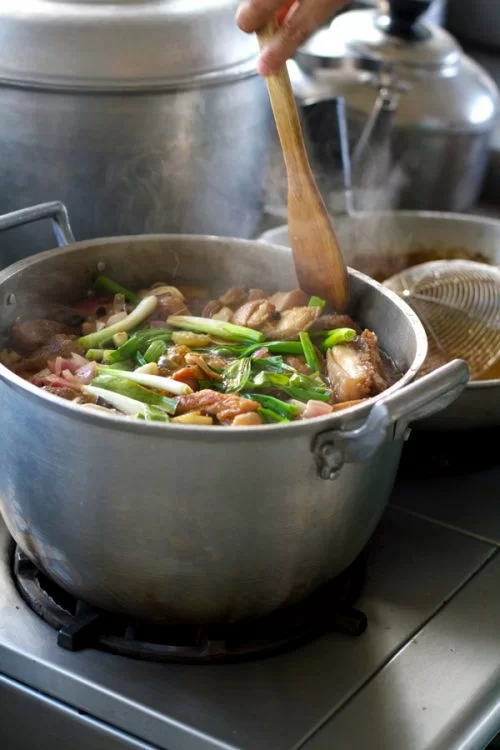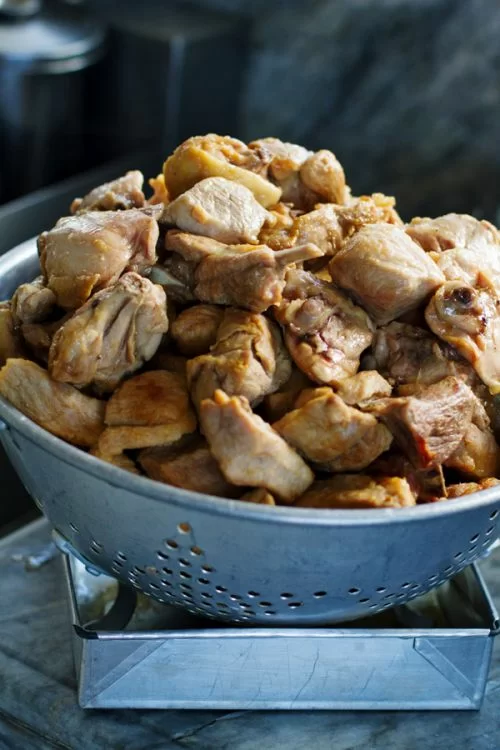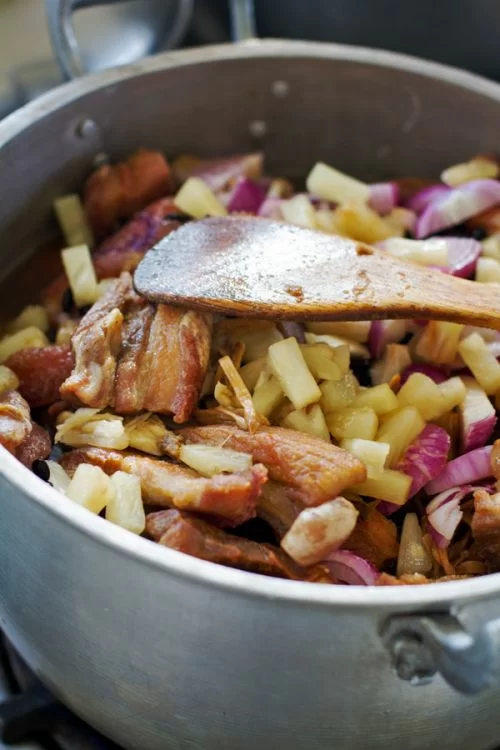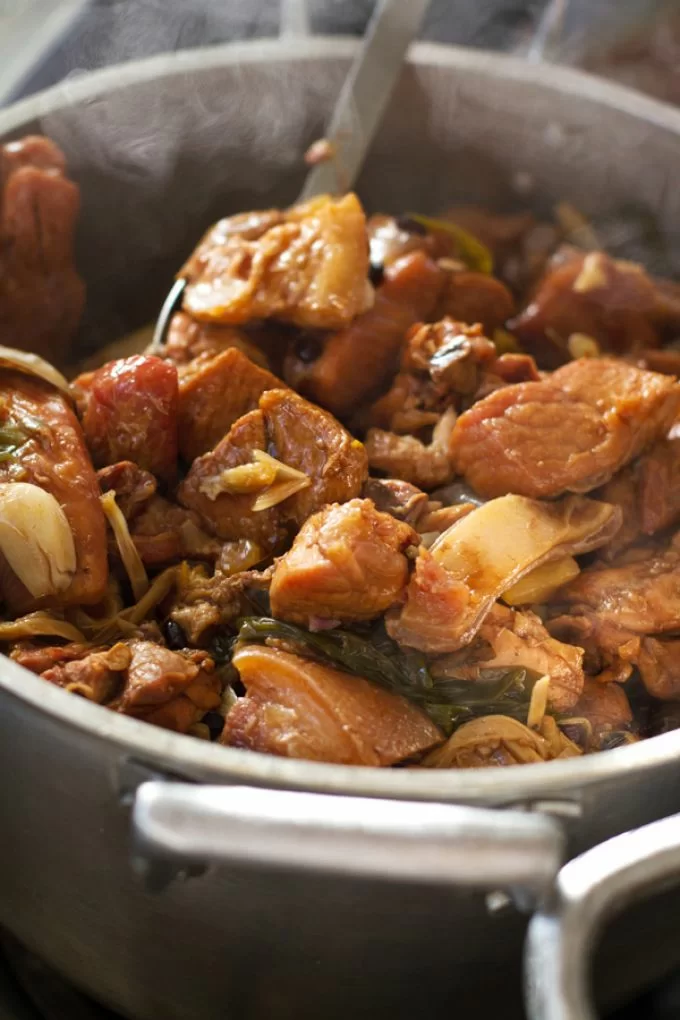Humba Recipe

Humba was another one of my most favorite Filipino recipes, so when I had the chance to watch the aunties in Eicher prepare this meal I was so thrilled.
Humba is a variation of pork adobo. It's salty-sweet, with just a little bit of acidity, and the meat is completely tender and full of flavor.

This is going to be a little scary for us non-Filipinos, I know, but in order to really make this good you need to buy pork belly (pictured above). It just doesn't compare when you use a different cut of pork. Even if you don't want to actually eat the fat on the pork belly, you still need it to cook with the lean parts so that it gives off that flavor.
First you fry the meat, and then you let it simmer together for a while with all this good stuff....

Until it becomes this golden, delicious, saucy meat that goes perfectly over a pile of hot rice.
So, so good.

Humba
Recipe from the Eicher house
2 lb. bone-in or boneless pork belly*
1-2 cups oil for frying
1 tablespoon azucena (substitute onion)
1-2 bay leaves
1 onion, chopped
1 tablespoons oyster sauce
2 tablespoons soy sauce (more to taste)
¼ cup pineapple tidbits
¼ cup black beans
¼ cup brown sugar
¼ cup vinegar
5 cloves garlic, peeled and smashed
1 ¼ cup water
½ cup green onions
1. Separate the fat from the lean meat by cutting the pork belly into medium sized pieces (about 2 inch by 1 inch).
2.
Heat the oil in a large frying pan over medium low heat and cook the
pieces of pork until golden brown, about 15 minutes. Remove from oil and
drain in a bowl lined with paper towels.
3. Transfer the pork to a
large pot and add all the remaining ingredients except the green onions.
Mix well and bring to a low boil over medium heat. Cover and simmer,
stirring occasionally. After 30 minutes, add the green onions and stir
to mix them into the pot.
4. Cover again and simmer for an additional 30 minutes, or until the pork is very tender.
*It
really is best to make this with pork belly, even though it might
require a trip to a special meat market to find it. The CSC aunties use
bone-in pork belly. Since each piece of pork belly has both a lean part
and a fatty part, it makes the meat extremely tender and full of flavor,
even if you choose not to eat the fatty part. I've made this with
pork sirloin as a subsitution, and I was disappointed with how much
tougher the meat was than with the original pork belly.






